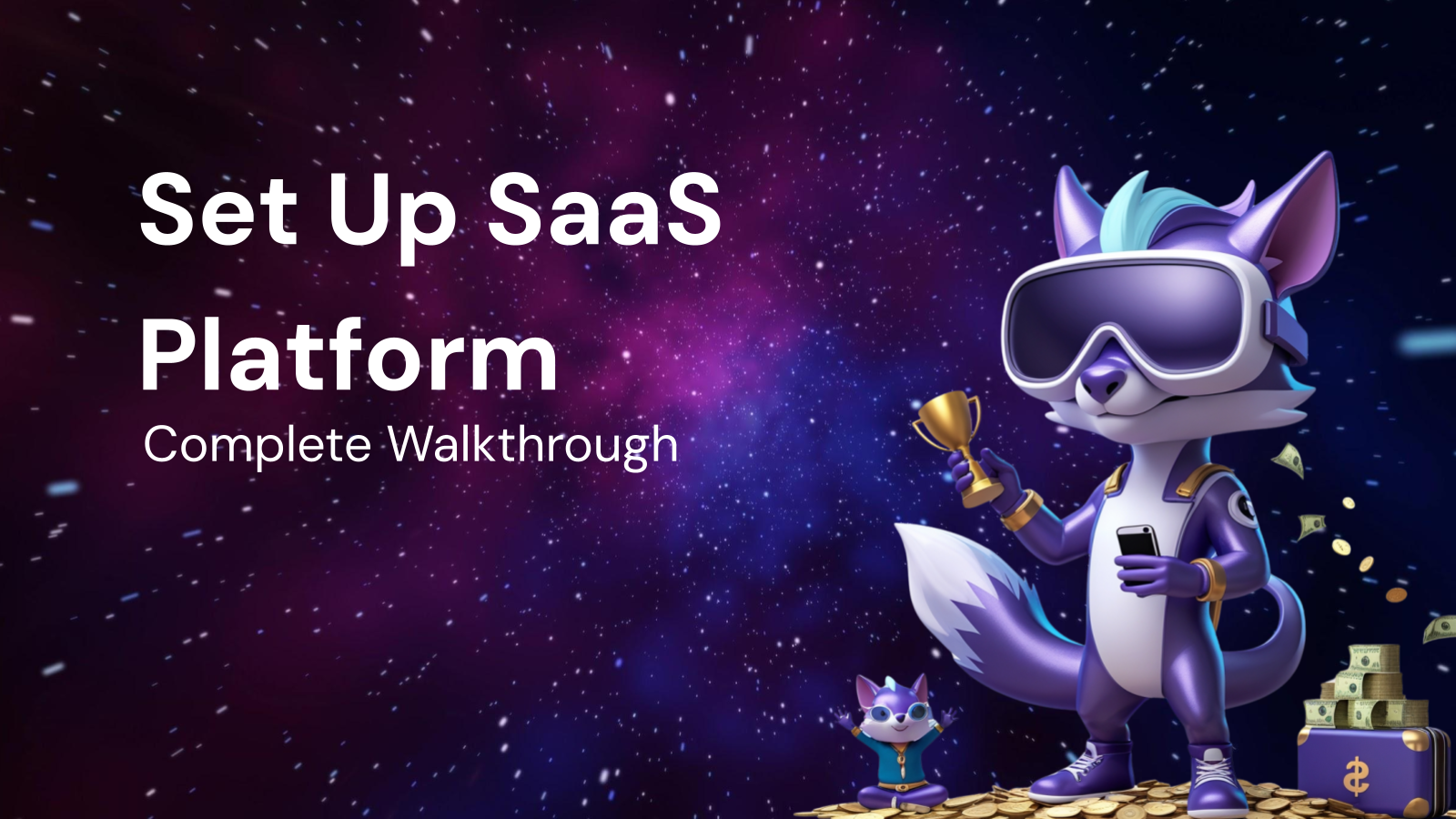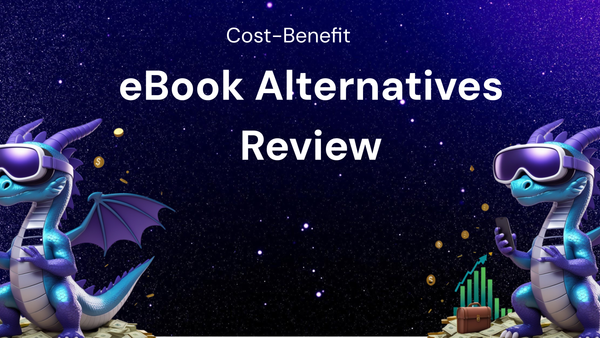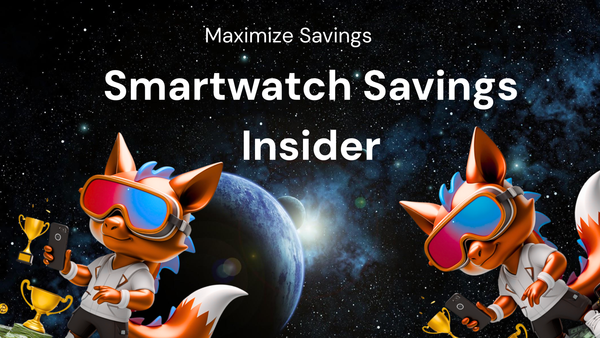How to Set Up SaaS: A Complete Walkthrough

How to Set Up SaaS: A Complete Walkthrough
The Software as a Service (SaaS) model has revolutionized the way businesses consume and deliver software. Offering accessibility, scalability, and cost-effectiveness, it's no wonder that SaaS has become the preferred choice for many organizations. But building and setting up a successful SaaS business requires more than just a great software idea. It demands careful planning, meticulous execution, and a keen understanding of the unique challenges and opportunities this model presents.
This comprehensive walkthrough will guide you through the essential steps of setting up a SaaS business, from initial concept to ongoing operations. Whether you're a seasoned entrepreneur or just starting, this guide will provide you with the knowledge and insights you need to navigate the SaaS landscape successfully.
I. Laying the Foundation: Ideation and Validation
Before diving into development and infrastructure, you need a solid foundation built on a viable idea and validated market demand.
- 1. Identifying a Problem and Niche:
- Start with a Problem: The best SaaS solutions solve a real problem for a specific target audience. Identify pain points in your industry or observe inefficiencies in existing workflows.
- Niche Down: Don't try to be everything to everyone. Focusing on a specific niche allows you to tailor your product, marketing, and support to a defined group of users, increasing your chances of success. Examples include:
- SaaS for small law firms focusing on case management.
- SaaS for e-commerce businesses specializing in personalized product recommendations.
- SaaS for real estate agents streamlining property listing and client communication.
- Competitive Analysis: Research your competitors. What solutions are they offering? What are their strengths and weaknesses? How can you differentiate your SaaS offering? Look for gaps in the market or opportunities to improve upon existing solutions.
- 2. Market Research and Validation:
- Define Your Target Audience: Create detailed buyer personas that outline your ideal customer's demographics, job title, pain points, and motivations.
- Conduct Surveys and Interviews: Gather direct feedback from your target audience. Ask about their current solutions, their challenges, and their willingness to pay for a solution like yours.
- Build a Minimum Viable Product (MVP): Develop a basic version of your SaaS product with core features to test its viability and gather user feedback. Avoid over-engineering at this stage; focus on delivering the most essential functionality.
- Run Beta Tests: Release your MVP to a select group of users for testing and feedback. Collect data on usage patterns, identify bugs, and gather suggestions for improvement.
- Analyze Feedback and Iterate: Use the feedback from your beta testers to refine your product and make necessary adjustments. This iterative process is crucial for ensuring that your SaaS solution meets the needs of your target audience.
- Consider Pre-selling or Crowdfunding: Validate demand and secure early funding by pre-selling subscriptions or launching a crowdfunding campaign.
II. Building Your SaaS Product: Technology and Architecture
The technology stack you choose will heavily influence the scalability, performance, and maintainability of your SaaS application.
- 1. Choosing the Right Technology Stack:
- Frontend Development:
- React: A popular JavaScript library for building user interfaces. Known for its component-based architecture and virtual DOM.
- Angular: A comprehensive framework developed by Google. Provides structure and tools for building complex applications.
- Vue.js: A progressive framework that is easy to learn and integrate into existing projects.
- Backend Development:
- Node.js: A JavaScript runtime environment that allows you to use JavaScript on the server-side. Ideal for building real-time applications and APIs.
- Python (with Django or Flask): A versatile language with powerful frameworks for building web applications. Django provides a full-featured framework, while Flask offers more flexibility.
- Ruby on Rails: A framework known for its convention-over-configuration approach, enabling rapid development.
- Java (with Spring Boot): A robust and scalable language often used for enterprise-level applications. Spring Boot simplifies the development process.
- Database:
- PostgreSQL: A powerful and open-source relational database management system (RDBMS). Known for its reliability and advanced features.
- MySQL: A widely used open-source RDBMS. Suitable for a variety of applications.
- MongoDB: A NoSQL database that stores data in JSON-like documents. Ideal for handling unstructured data.
- Cloud Platform:
- Amazon Web Services (AWS): A comprehensive suite of cloud services, including compute, storage, and databases. Offers scalability and flexibility.
- Microsoft Azure: Microsoft's cloud platform, providing a wide range of services for building and deploying applications.
- Google Cloud Platform (GCP): Google's cloud offering, known for its innovation in areas like machine learning and data analytics.
- Considerations:
- Scalability: Choose technologies that can handle increasing user loads and data volumes.
- Security: Select tools and frameworks that offer robust security features to protect user data.
- Maintainability: Opt for technologies that are well-documented and have a large community for support.
- Team Expertise: Consider your team's existing skills and experience when making technology choices.
- Frontend Development:
- 2. Designing Your SaaS Architecture:
- Multi-Tenancy: A key characteristic of SaaS is the ability to serve multiple customers from a single instance of the application. Choose an architecture that supports multi-tenancy efficiently and securely. Different approaches include:
- Separate Databases per Tenant: Provides maximum isolation but can be costly to manage.
- Shared Database, Separate Schemas per Tenant: Offers a good balance between isolation and manageability.
- Shared Database and Schema: The most cost-effective approach but requires careful design to prevent data leakage.
- API Design: Design your API with clear endpoints, consistent data formats, and proper authentication mechanisms. Use RESTful principles for ease of use and scalability.
- Microservices Architecture (Optional): Break down your application into smaller, independent services that can be developed, deployed, and scaled independently. This can improve agility and resilience.
- Caching: Implement caching mechanisms to reduce database load and improve application performance. Use techniques like content delivery networks (CDNs) for static assets.
- Asynchronous Processing: Use message queues (e.g., RabbitMQ, Kafka) to handle time-consuming tasks asynchronously, preventing them from blocking the main application thread.
- Multi-Tenancy: A key characteristic of SaaS is the ability to serve multiple customers from a single instance of the application. Choose an architecture that supports multi-tenancy efficiently and securely. Different approaches include:
- 3. Development Best Practices:
- Agile Development: Use agile methodologies like Scrum or Kanban to manage the development process. This allows for flexibility, iterative development, and continuous improvement.
- Version Control: Use a version control system like Git to track changes to your code, collaborate effectively, and revert to previous versions if necessary.
- Testing: Implement comprehensive testing strategies, including unit tests, integration tests, and end-to-end tests. Automated testing is essential for ensuring code quality and preventing regressions.
- Continuous Integration and Continuous Delivery (CI/CD): Automate the build, testing, and deployment process to enable rapid and frequent releases.
- Security Best Practices: Follow secure coding practices to prevent vulnerabilities like SQL injection, cross-site scripting (XSS), and cross-site request forgery (CSRF).
III. Setting Up Your Infrastructure: Cloud Platform and DevOps
Your infrastructure needs to be scalable, reliable, and secure to support your SaaS application.
- 1. Choosing a Cloud Provider:
- AWS, Azure, or GCP: Evaluate the strengths and weaknesses of each platform based on your specific needs. Consider factors like pricing, services offered, and geographic availability.
- Managed Services: Leverage managed services like databases, message queues, and container orchestration to reduce operational overhead and improve scalability.
- Infrastructure as Code (IaC): Use tools like Terraform or CloudFormation to define and manage your infrastructure as code. This allows you to automate the deployment and configuration of your resources.
- 2. Setting Up Your Environment:
- Virtual Machines or Containers: Choose between virtual machines (VMs) and containers (e.g., Docker) based on your application requirements and deployment preferences. Containers offer greater resource utilization and faster deployment times.
- Load Balancing: Distribute traffic across multiple servers to improve performance and availability. Use load balancers to handle traffic spikes and ensure that your application remains responsive.
- Auto-Scaling: Automatically scale your infrastructure up or down based on demand. This ensures that you have enough resources to handle peak loads without over-provisioning.
- Monitoring and Logging: Implement comprehensive monitoring and logging to track the performance of your application and identify potential issues. Use tools like Prometheus, Grafana, and ELK stack for monitoring and analysis.
- 3. Implementing DevOps Practices:
- Automation: Automate as many tasks as possible, including deployment, configuration, and monitoring. This reduces manual errors and improves efficiency.
- Collaboration: Foster collaboration between development and operations teams. This promotes faster release cycles and improved problem resolution.
- Continuous Feedback: Continuously collect feedback from users and monitor application performance to identify areas for improvement.
- Security: Integrate security into every stage of the DevOps lifecycle. Automate security testing and implement security policies to protect your infrastructure and data.
IV. Pricing and Packaging: Creating a Sustainable Business Model
Your pricing and packaging strategy will determine your revenue and profitability.
- 1. Understanding SaaS Pricing Models:
- Usage-Based Pricing: Charge customers based on their usage of the application (e.g., number of API calls, storage used).
- Tiered Pricing: Offer different subscription tiers with varying features and usage limits.
- Per-User Pricing: Charge customers based on the number of users accessing the application.
- Flat-Rate Pricing: Offer a single price for access to all features of the application.
- Freemium: Offer a basic version of the application for free, with paid upgrades for additional features.
- Considerations:
- Value Proposition: Align your pricing with the value you provide to your customers.
- Cost Structure: Ensure that your pricing covers your costs and allows for a healthy profit margin.
- Competitive Landscape: Research your competitors' pricing and position your offering accordingly.
- 2. Creating Attractive Packages:
- Feature Differentiation: Offer different features in each package to appeal to different customer segments.
- Usage Limits: Set usage limits for each package to encourage customers to upgrade to higher tiers as their needs grow.
- Discounts and Promotions: Offer discounts for annual subscriptions or early adopters.
- 3. Calculating Customer Lifetime Value (CLTV):
- CLTV = (Average Revenue per Customer) x (Customer Lifetime) - (Customer Acquisition Cost)
- Understanding your CLTV is crucial for making informed decisions about pricing, marketing, and customer acquisition.
V. Marketing and Sales: Reaching Your Target Audience
Attracting and retaining customers is essential for the success of your SaaS business.
- 1. Defining Your Marketing Strategy:
- Content Marketing: Create valuable content (blog posts, articles, ebooks, webinars) to attract and engage your target audience.
- Search Engine Optimization (SEO): Optimize your website and content to rank higher in search engine results.
- Social Media Marketing: Use social media platforms to connect with your target audience and promote your SaaS solution.
- Paid Advertising: Use paid advertising channels (e.g., Google Ads, social media ads) to reach a wider audience.
- Email Marketing: Build an email list and send targeted messages to nurture leads and convert them into customers.
- 2. Building a Sales Process:
- Lead Generation: Attract potential customers to your website or landing page.
- Lead Qualification: Identify leads that are most likely to become paying customers.
- Sales Demos: Provide personalized demos to showcase the value of your SaaS solution.
- Closing the Deal: Negotiate terms and finalize the sale.
- Onboarding: Help new customers get started with your SaaS application.
- 3. Customer Relationship Management (CRM):
- Use a CRM system (e.g., Salesforce, HubSpot) to manage customer interactions and track sales progress.
- Customer Success: Focus on helping your customers achieve their goals with your SaaS solution. This will improve customer retention and drive growth.
VI. Customer Support and Retention: Building Long-Term Relationships
Providing excellent customer support is essential for retaining customers and building a loyal user base.
- 1. Providing Excellent Customer Support:
- Multiple Channels: Offer support through multiple channels (e.g., email, phone, chat, knowledge base).
- Fast Response Times: Respond to customer inquiries quickly and efficiently.
- Knowledgeable Support Team: Train your support team to be knowledgeable about your SaaS application and able to resolve customer issues effectively.
- Self-Service Resources: Provide self-service resources (e.g., FAQs, tutorials, documentation) to help customers solve their own problems.
- 2. Measuring Customer Satisfaction:
- Net Promoter Score (NPS): Measure customer loyalty by asking customers how likely they are to recommend your SaaS solution to others.
- Customer Satisfaction (CSAT) Surveys: Gather feedback from customers about their experience with your SaaS application and support team.
- Churn Rate: Track the percentage of customers who cancel their subscriptions.
- 3. Reducing Churn:
- Proactive Outreach: Reach out to customers who are at risk of churning.
- Personalized Support: Provide personalized support based on each customer's needs.
- Continuous Improvement: Continuously improve your SaaS application and support processes based on customer feedback.
VII. Legal and Compliance: Protecting Your Business and Users
Navigating the legal and regulatory landscape is crucial for protecting your SaaS business and its users.
- 1. Terms of Service (ToS) and Privacy Policy:
- Terms of Service: Outline the rules and regulations for using your SaaS application.
- Privacy Policy: Explain how you collect, use, and protect user data.
- Compliance: Ensure that your ToS and Privacy Policy comply with relevant laws and regulations, such as GDPR and CCPA.
- 2. Data Security and Compliance:
- Data Encryption: Encrypt sensitive data to protect it from unauthorized access.
- Security Audits: Conduct regular security audits to identify and address vulnerabilities.
- Compliance Certifications: Obtain relevant compliance certifications (e.g., SOC 2, ISO 27001) to demonstrate your commitment to data security.
- 3. Intellectual Property Protection:
- Copyright: Protect your software code and other creative works.
- Trademarks: Protect your brand name and logo.
- Patents: Consider patenting any unique inventions or processes.
VIII. Scaling Your SaaS Business: Growth and Expansion
Once you've established a solid foundation, you can focus on scaling your SaaS business.
- 1. Expanding Your Product Offering:
- New Features: Add new features to your SaaS application to meet the evolving needs of your customers.
- Integrations: Integrate with other popular applications to expand your reach and functionality.
- New Products: Develop new SaaS products to address different market segments.
- 2. Expanding Your Geographic Reach:
- Localization: Translate your SaaS application and marketing materials into other languages.
- Internationalization: Adapt your SaaS application to support different currencies, date formats, and other regional settings.
- Global Marketing: Develop a marketing strategy to reach customers in other countries.
- 3. Building a Strong Team:
- Recruit Top Talent: Hire talented individuals with the skills and experience necessary to grow your SaaS business.
- Invest in Training: Provide ongoing training to your employees to keep them up-to-date on the latest technologies and best practices.
- Foster a Positive Culture: Create a positive and supportive work environment to attract and retain top talent.
Conclusion:
Setting up a successful SaaS business requires careful planning, execution, and ongoing optimization. By following the steps outlined in this guide, you can increase your chances of building a thriving SaaS company that delivers value to your customers and generates sustainable revenue. Remember to continuously iterate, adapt to market changes, and prioritize customer satisfaction. Good luck!




